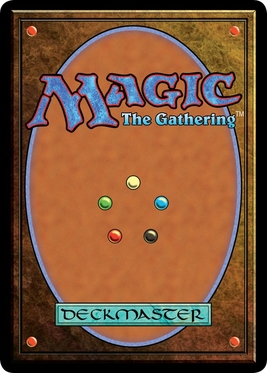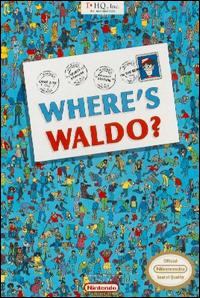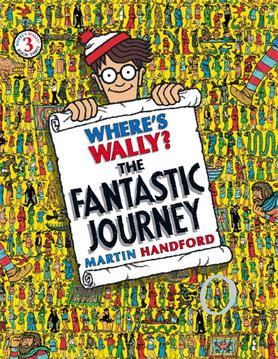Related Research Articles

Magic: The Gathering is a tabletop and digital collectible card game created by Richard Garfield. Released in 1993 by Wizards of the Coast, Magic was the first trading card game and had approximately fifty million players as of February 2023. Over twenty billion Magic cards were produced in the period from 2008 to 2016, during which time it grew in popularity. As of the 2022 fiscal year, Magic generates over $1 billion in revenue annually.

The Compact Disc-Interactive is a digital optical disc data storage format as well as a hardware platform, co-developed and marketed by Dutch company Philips and Japanese company Sony. It was created as an extension of CDDA and CD-ROM and specified in the Green Book specifications, co-developed by Philips and Sony, to combine audio, text and graphics. The two companies initially expected to impact the education/training, point of sale, and home entertainment industries, but the CD-i is largely remembered today for its video games.

The TurboGrafx-16, known as the PC Engine outside North America, is a home video game console designed by Hudson Soft and sold by NEC Home Electronics. It was the first console marketed in the fourth generation, commonly known as the 16-bit era, however in actuality, the console has an 8-bit central processing unit (CPU) coupled with a 16-bit graphics processor, effectively making the claim somewhat false advertising. It was released in Japan in 1987 and in North America in 1989. In Europe the Japanese model was unofficially imported and distributed in the United Kingdom and France from 1988. In Japan, the system was launched as a competitor to the Famicom, but the delayed United States release meant that it ended up competing with the Sega Genesis and later the Super NES.

Mario Teaches Typing is an educational video game developed and published by Interplay Productions for MS-DOS compatible operating systems, Microsoft Windows, and Macintosh. The game uses the Mario character, licensed from Nintendo, to teach keyboard skills. A sequel to the game, Mario Teaches Typing 2, was developed by Brainstorm and published by Interplay in 1997.

Star Fox 2 is a rail shooter game developed by Nintendo and Argonaut Software and published by Nintendo for the Super Nintendo Entertainment System (SNES). It was completed in 1995 but did not see an official release until 2017 on the Super NES Classic Edition.

Sacrifice is a real-time strategy video game published by Interplay Entertainment in 2000 for Microsoft Windows platform. Developed by Shiny Entertainment, the game features elements of action and other genres. Players control wizards who fight each other with spells and summoned creatures. The game was ported to Mac OS 9.2 in 2001.

Where's Waldo? is a hidden object game developed by Bethesda Softworks and published by THQ for the Nintendo Entertainment System in 1991. It was the first video game loosely based on Martin Handford's 1987 book of the same name. Mostly similar to the books, players must help Waldo get to the Moon by finding him in each of the eight levels in the game.
Development of Windows XP started in 1999 as a successor to the Windows Neptune and Windows Odyssey projects. Neptune was originally going to be the successor of Windows Me, though based on the NT kernel. Microsoft merged the teams working on Neptune with that of Windows Odyssey, Windows 2000's successor, in early 2000. The resulting project, codenamed "Whistler", went on to become Windows XP.

Where's Wally?, published in the United States and Canada as Where's Waldo?, is the title of the first book in the Where's Wally? series, published in 1987.

Where's Wally? is an animated television series production based on the Where's Wally? books by Martin Handford and aired on CBS in the United States and ITV in the United Kingdom for one season with a series of four episodes being released straight-to-video following afterwards. The series was produced by The Waldo Film Company, Handford's vanity label for the Where's Wally? property, with DIC Enterprises handling animation production and HIT Communications PLC handling worldwide distribution, although both companies were not involved with the later direct-to-video specials.
Where's Waldo? Exploring Geography is an educational video game based on the Where's Waldo? book series.

Ready to Read with Pooh is a 1997 interactive CD-ROM video game developed by Disney Interactive's Victoria studio that helps children from ages three to six, learn to read. There are nine activities in the game. When the player completes an activity successfully, they will receive an item that goes into a treehouse. A companion game Ready for Math with Pooh, which focused on math skills and has a garden and seven activities, was also released around the same time as this game.

Where's Wally? The Fantastic Journey is the third Where's Wally? book, first released in 1989. In the book Wally travels to fantasy lands in search of Wizard Whitebeard's magical scrolls. The book introduces the second recurring Where's Wally character, Wizard Whitebeard. Readers are also asked for the first time to find the Wizard's scrolls.
Where's Wally? is an English series of children's puzzle books created by English illustrator Martin Handford. The books consist of a series of detailed double-page spread illustrations depicting dozens or more people doing a variety of amusing things at a given location. Readers are challenged to find a character named Wally and his friends hidden throughout the pages.

Where's Wally?: The Incredible Paper Chase is the seventh and latest book in the Where's Wally? series, released in 2009. It features Wally, Woof, Wenda, Wizard Whitebeard, and Odlaw travelling through different scenes.

Warcraft II: Tides of Darkness is a fantasy real-time strategy computer game developed by Blizzard Entertainment and released for MS-DOS and Microsoft Windows in 1995 and Mac OS in 1996 by Blizzard's parent, Davidson & Associates. A sequel to Warcraft: Orcs & Humans, the game was met with positive reviews and won most of the major PC gaming awards in 1996. In 1996, Blizzard released an expansion pack, Warcraft II: Beyond the Dark Portal, for DOS and Mac OS, and a compilation, Warcraft II: The Dark Saga, for the PlayStation and Sega Saturn. The Battle.net edition, released in 1999, included Warcraft II: Beyond the Dark Portal, provided Blizzard's online gaming service, and replaced the MS-DOS version with a Windows one.

Where's Waldo? is an American animated children's television series produced by DreamWorks Animation Television, based on the Where's Wally? book series created by Martin Handford. It is the second television adaptation of the series, succeeding the 1991 animated series, and incorporates elements from that series. The series debuted on Universal Kids on July 20, 2019. It moved to the streaming service Peacock for its second season on July 15, 2020. Additional episodes of the series aired on December 11 the same year. Other media featuring the titular character include the 1991 original animated television series and the series of books.

Disney's Animated Storybook is a point-and-click adventure interactive storybook video game series based on Walt Disney feature animations and Pixar films that were released throughout the 1990s. They were published by Disney Interactive for personal computers for children ages four to eight years old. Starting from 1994, most of the entries in the series were developed by Media Station. They have the same plots as their respective films, though abridged due to the limited medium.

Disney's Activity Center is a series of PC and PlayStation games released by Disney Interactive with each title consisting of various activities and minigames to be completed, using aspects of their licensed property.

PBA Bowling is a 1995 bowling sports-based video game from Bethesda Softworks. A sequel, PBA Tour Bowling 2, was released in 2000.
References
- 1 2 "Where's Waldo". Santa Maria Times . September 19, 1995. p. 17. Archived from the original on August 1, 2024. Retrieved August 1, 2024– via Newspapers.com.
- ↑ "Where's Waldo? found for first time on CD-ROM in "Where's Waldo? at the Circus" by WarnerActive; math skills learning adventure now available in stores". Business Wire . September 19, 1995. Archived from the original on August 1, 2024. Retrieved August 1, 2024– via Gale Research.
- 1 2 Henderson, Shirley (December 8, 1995). "A trio of CD-ROMs to top a holiday wish list". Chicago Tribune . p. 372. Archived from the original on August 1, 2024. Retrieved August 1, 2024– via Newspapers.com.
- ↑ "About". Imagination Pilots Entertainment. Archived from the original on August 29, 1999. Retrieved August 1, 2024.
- ↑ "Where's Waldo at the Circus". The Philadelphia Inquirer . December 18, 1995. p. 36. Archived from the original on August 1, 2024. Retrieved August 1, 2024– via Newspapers.com.
- ↑ Essick, Kristi. "Where's Waldo? at the Circus". CNET . Archived from the original on June 6, 1997. Retrieved August 1, 2024.